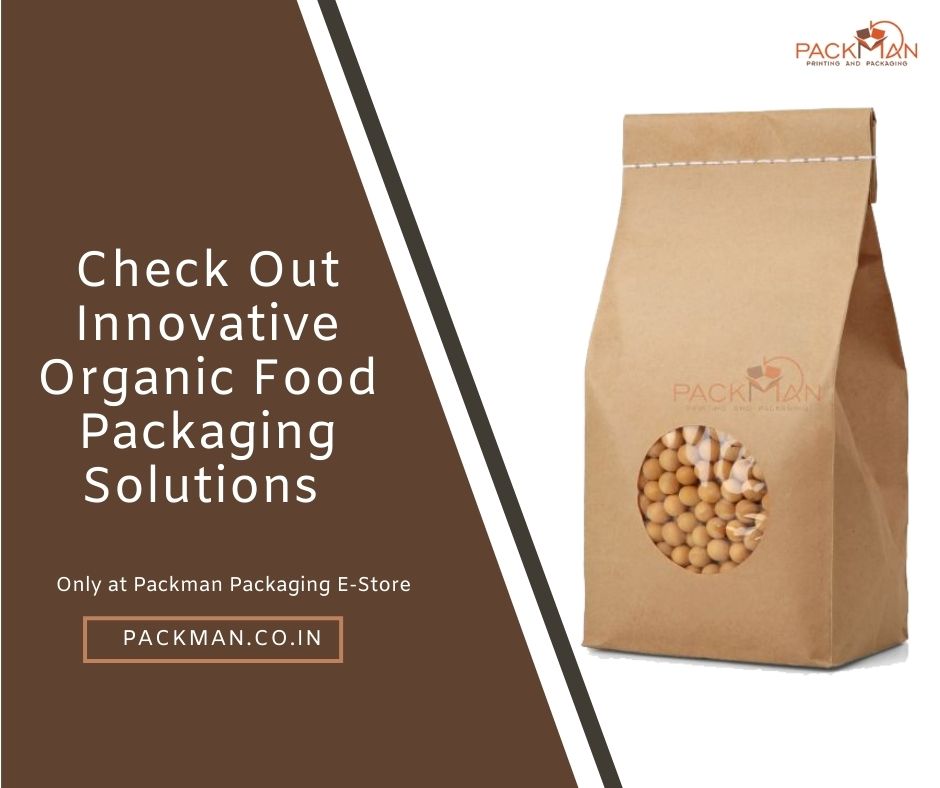The organic food industry has grown tremendously in the last few years. As per the USDA, the demand for organically produced goods has seen a double-figure growth and can be found in nearly 3 out of 4 conventional grocery and chain stores. An increase in consumer demand for organic products means more companies are incorporating organic and all-natural food items into their product chains.
Because several organic goods are slightly higher-priced than their non-organic counterparts, packaging for these products ought to be reflective of the same quality standards. To differentiate themselves, organic foods and goods manufacturers not only have to compete with other organic products but also with non-organic products in the market.
In this blog, Mr. Gaurav Jalan, Founder, and Director of Packman Packaging Pvt Ltd, India’s leading food packaging manufacturer says packaging organic products need a unique blend of creativity to meet buyer expectations and deliver on quality and brand promise. So, what do buyers want from organic food packaging?
Superior Quality
Above all buyers turn to organic products for quality. From sourcing the finest ingredients to using only natural ingredients, organic good companies have to reflect the same quality in their packaging. Conveying a sense of premium and superior quality can be achieved through deliberate packaging designs that incorporate higher-quality packaging materials, structures, and finishes.
Because an item’s packaging is mostly the first touch a consumer has with a brand, it is critical to delivering on the value expectations from buyers. A quality packaging design will easily differentiate between an organic, natural product from conventional, mass-produced products.
Transparency
The organic things are all about transparency. From showing ingredients used to the source of their origin, organic food products, and goods depend on transparency to deliver a message of transparency and “good for you” quality to buyers.
How does this translate into packaging? Unique packaging that lets consumers to see the foods, like windowing, can be an excellent way to be transparent. Also, creatively educating the buyers and incorporating the sourcing of ingredients or the production of the items can be achieved through strategic placement of text and graphics.
Purity
Just like transparency, buyers equate organic goods as pure and better for them. They have the same expectations of their packaging. From soya-based inks to recycled materials or recyclability, packaging has to also deliver on the purity message. More organic structures that make the products simple to handle or use can also convey a sense of purity.
Not doing this can conflict with the promise of a wholesome product. Keeping packaging simple, yet elegant and exciting is vital to staying pure and truly putting the product first.
Visual Factors
Graphics, text and other visual factors are vital for any brand packaging. For organic items, these elements are more essential. The idea of going back to nature is common link consumers make when opting to buy organic products.
Packaging that conveys an added natural approach can be achieved by using high-quality photography that makes the healthful benefits apparent, ingredient call-outs and color selections. Photography that is uncluttered and showcases items in their natural state as well as paying special focus to how nutritional qualities and features are represented in the packaging is mandatory for creating a packaging design that is as healthful and wholesome as buyers expect.
Creating a Wholesome Food Packaging Design
Organic foods and products are making a mark in simply about every market. From foods to health and beauty, organic items are here to stay. Developing packaging that matches a product’s healthful promise needs experienced packaging specialists. Contact the packaging specialists at Packman Packaging to learn how we can help you create wholesome packaging for your organic brands.




